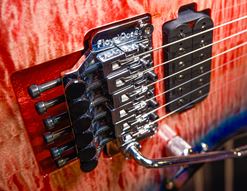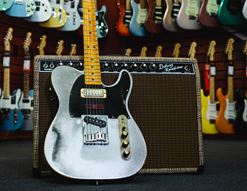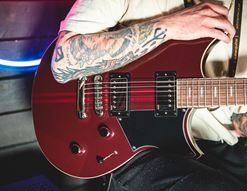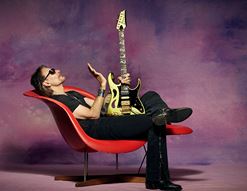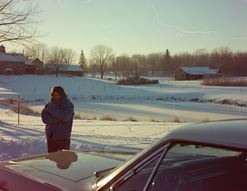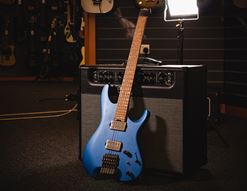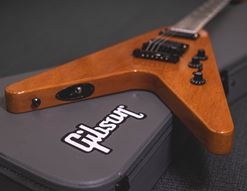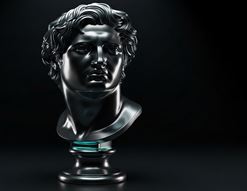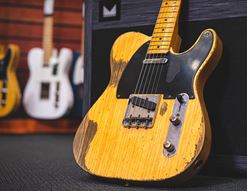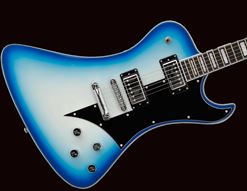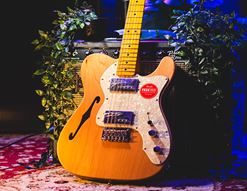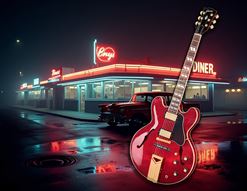Did you ever expect Oasis to regroup? For those of us who were around for their initial bout of world domination, the band were always half an argument away from imploding. When they finally did, it was a shame, but not a surprise. Since then, the Gallagher brothers have both enjoyed successful solo careers, and both have included Oasis tunes in their live sets.
Still, back they are and their comeback tour has been a Supersonic success in terms of ticket sales.
Have you been listening to their back catalogue with fresh ears? Are you looking to get the sound of that signature barrage of sound for yourself? If so, then read on, because I’m going to tell you exactly what to use and how to use it…
Contents
Noel Gallagher Guitar Playing Tips
Oasis Electric Guitars
- Noel appreciates thinline semis from Epiphone and Gibson
- Epiphone are a frequent choice for other models too
- Humbuckers and 'Gibson' style are the order of the day, mainly
Oasis have what is often described as a ‘wall of sound’, and this particularly refers to the guitar sound. Big, distorted and brash, it’s the sound of two guitarists turned up to ten and blasting out chords in breeze blocks, with little to no syncopation.
I mean that in a good way!
Whilst pretty much any guitar can do this, Noel is quite selective about what he uses, whether that’s down to the feel of certain guitars or (speaking plainly) how they look. He’s used cheap guitars and very expensive guitars, and you’ll find the main ones right here.
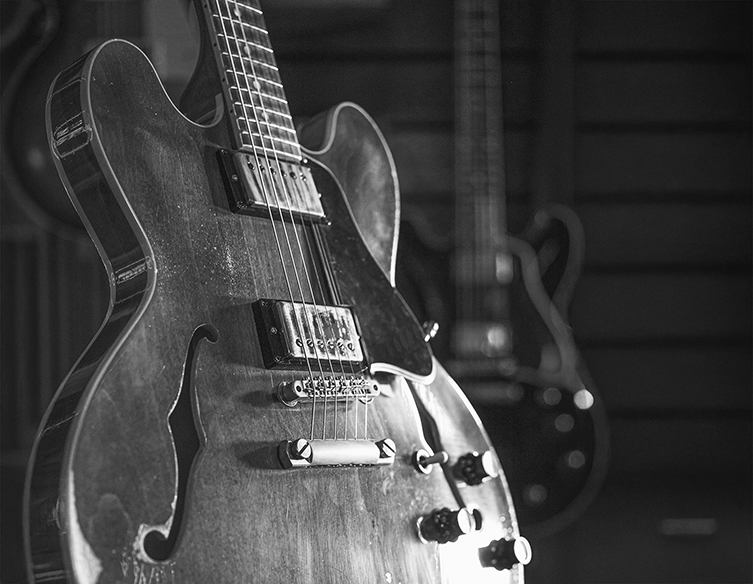
Epiphone Les Paul
Have a look at early Oasis videos and you’ll see Noel blazing away on a pretty down-to-earth Epiphone Les Paul Standard. He obviously knew what he liked but wasn’t in a position to ‘buy American’, and so the humble Epiphone was what he went for. His Les Paul looks to me to be an early 90s Heritage Cherry Sunburst model, and it doesn’t seem to have been modified in any particular way.
Once you plug into a roaring Marshall amp, the subtle differences between any guitars get minimised, so guitarists on a budget should follow Noel’s lead and use one of the many Epiphone Les Paul models that are available out there. They are better than ever, and today there is loads of choice between models and finishes.

Epiphone Riviera
Noel’s (and Bonehead’s actually, the early Oasis co-guitarist) most associated guitar is the Epiphone Riviera. Superficially similar to the Gibson ES-335, the Riviera is actually an original Epiphone model and not a replica of any particular Gibson guitar.
The Riviera, on paper at least, is actually very similar to an ES-335: the shape is the same (apart from the headstock), the construction is the same (layered maple for the body, with a solid maple centre block) and it has a set of two humbucker pickups. I say this because I feel that any reasonable quality 335-style guitar will get you close to the sound and vibe of Oasis, as long as it has humbuckers and a solid centre block. Fully hollow models (in other words, no solid centre block) such as the Epiphone Casino - which has single coil P90 pickups - will deliver a pretty different sound and playing experience, even though it looks superficially similar to the Riviera and 335. The Casino is a wonderful guitar but I advise the more powerful sound from an ES-335-style guitar for the kind of gain levels that Oasis use.
For those of you who want authenticity though, there is no better shout than a real-deal signature model Epiphone Noel Gallagher Riviera. It is available in that perfect shade of dark wine red and bears all of the appropriate details like inlays and the cool white ‘E’-logoed pickguard. It looks the part, feels great and delivers a big sound that’s perfect for laying down beds of distorted chords. It’s also not prohibitively expensive, which is always refreshing when looking at artist signature guitars.
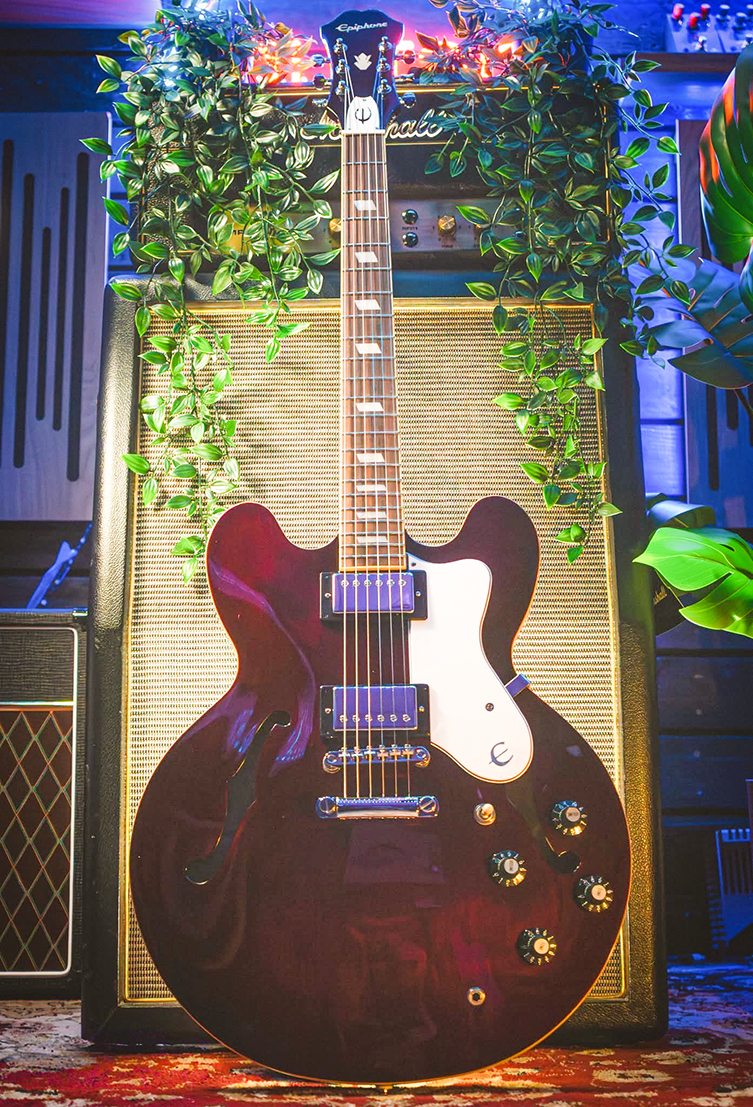
Incidentally, it was a Riviera model (with a distinctive ‘Frequensator’ tailpiece and mini humbuckers) that Noel had painted into a Union Jack for the famous Maine Road gig back in the day.
Gallagher was also seen in the late 90s playing an Epiphone Sheraton on occasion. Some fansites reckon it was a 1960s Sheraton. I don’t! I think it was a mid-to-late 90s off-the-shelf new Epi (they did exist back then, folks) and not anything older. I may be wrong. Very cool guitar, either way!
Gibson ES-355
The Riviera is the classic early-period Oasis guitar, but these days, Noel is definitely partial to Gibson’s fanciest thinline, the ES-355. He obviously has an affinity with the Gibson ES style, and this model is the most opulent version of that style available. It’s a luxurious guitar indeed, with all of the block inlays and split-diamonds that mark out Gibson’s top-end guitars.
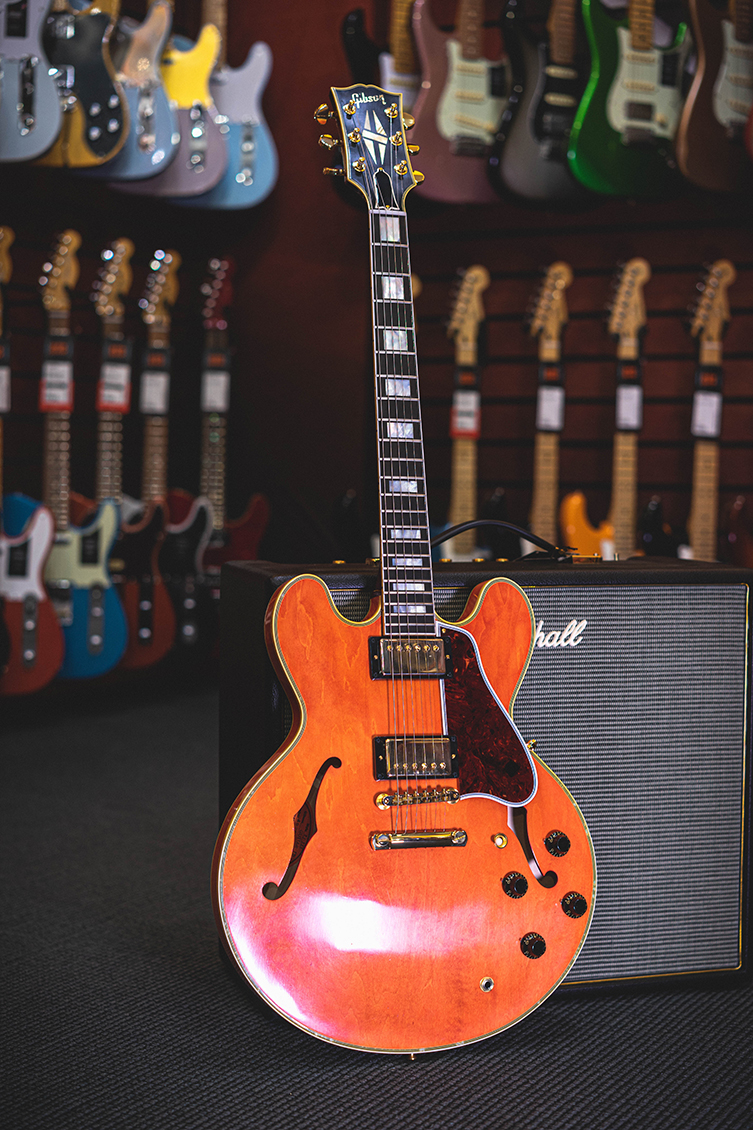
I don’t know about you, but this one always reminds me of Johnny Marr’s ES-335! Certainly, Marr is a big influence on him, and this is definitely a guitar befitting a Britpop legend. Noel’s is a classic Cherry Red one with a Bigsby.
Rickenbacker 330 Mapleglo
Another guitar that’s often seen at Oasis and Noel Gallagher shows is the Rickenbacker 330. It’s another element of the Beatles influence, I suppose, but it’s really been an Indie mainstay for decades thanks to its very singular look and sound.
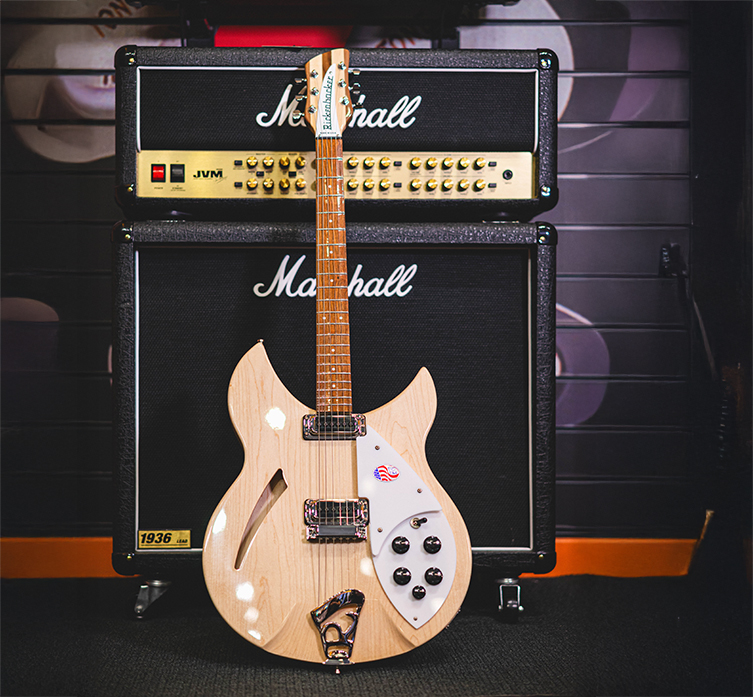
I’d definitely not say that this guitar will give you the famous Oasis tone, since the Ricky 330 actually has quite an idiosyncratic sound, but Gallagher uses it often and it is therefore a part of his sonic palette.
They are very cool guitars, and they kind of ‘play you’ as much as you ‘play them’, which is part of their appeal. Try one out for sure and see if that works for you, because Noel (and Marr, Weller, Buck and others) loves them.
Noel’s Ricky can be heard on songs like Who Feels Love and Go Let it Out, amongst others.
Amplifiers
By the looks of things, Noel Gallagher loves buying amplifiers. He’s had loads of them over the years, with brands like Vox, Marshall and Hiwatt showing up again and again. These are all classic British valve amp brands, and they deliver a classic British valve sound. Sounds obvious to say that, but that’s what’s on the recipe list for this type of sound!
In terms of live amp usage, Noel seems to favour a multiple amp set up, with a blended signal from two or three different mic’d amps going out to the front-of-house. Below, I’ll talk about a few of the main ones, but it seems that he changes his rig fairly frequently, so I’d venture to say that a classic valve tone with plenty of gain on tap is what you’re ultimately after. Richness rather than tightness may be a useful phrase to keep in mind: his tone is frequently heavily distorted, but we’re never talking ‘metal’ here.

Marshall Amps
For amplifiers, Noel tends to go things slightly differently these days compared to back in the 90s. If you’re looking for that brilliantly buzzy ‘Rock n Roll Star’ sound though, then I think it’s important to understand that you can get what you need from a straightforward Marshall tube amp, cranked loud!
A roaring ‘British’ sound is required for the Oasis stuff, and a little feedback is totally okay. The Oasis amp of choice back then was the Marshall JCM900, which, for context, is also the amp favoured by Anthrax and Megadeth! If you can’t get your hands on a JCM900, then any Marshall cranked to eleven should at least get you close to where you need to be. An overdrive pedal can assist wonderfully too, so check out the Effects section of the blog below.
Noel’s also a fan of the Bluesbreaker combo, perhaps on the advice of his pal Paul Weller. Gibson-style guitars paired with Marshall-style amps are just one of those great things in life like strawberries & cream, or fish & chips. If you haven’t tried such a combination for yourself, I reckon doing so and gaining the experience! You need an opinion on this!
Fender Blues Junior & Hiwatt Custom 100
It sounds odd to say it, but amidst all of his Marshall stacks Bluesbreakers, a humble Fender Blues Junior (two in fact) is Noel’s main guitar amp!
I’ve listed this together with the Hiwatt Custom 100 amp since he seems to favour using these both together. Given how clean sounding the Hiwatts are and how ‘classic Fender’ the Blues Junior sounds, I expect that Noel is getting most of his gain these days from pedals, which leads me neatly onto…
Pedals and Effects
There have been a lot of pedals underneath Noel Gallagher’s feet over the years, so the following is a small smattering of that collection. These are the ones I’d pinpoint to fans looking to emulate the majority of his tones, when used in conjunction with the guitars and amps outlined above:
- Vox Wah: a classic wah from a company that is very ‘Noel’: British and full of heritage.
- Ibanez TS-9: universally useful pedal for adding crunch to clean tones and lift to dirty tones
- ProCo Rat: for Noel’s cleaner amp setup, this is what dishes out the filth
- Analogman King of Tone Overdrive: one of the most in-demand overdrives on the market
- Hughes & Kettner Rotosphere: a nod to Noel’s love for 60s psychedelia, this replicates the sound of a Leslie cabinet
- Strymon Timeline: he’s used a bunch of reverbs and delays over the years. Currently, he likes this one, which I’d choose to describe as ‘champagne for delay pedals’.
Oasis Acoustic Guitars
Where would Oasis be without acoustic guitars? From the opening strums of Wonderwall to the iconic front cover of Definitely Maybe, acoustic guitars have featured heavily in the Oasis mythos. Here’s are the specific models you’ll want to know about…
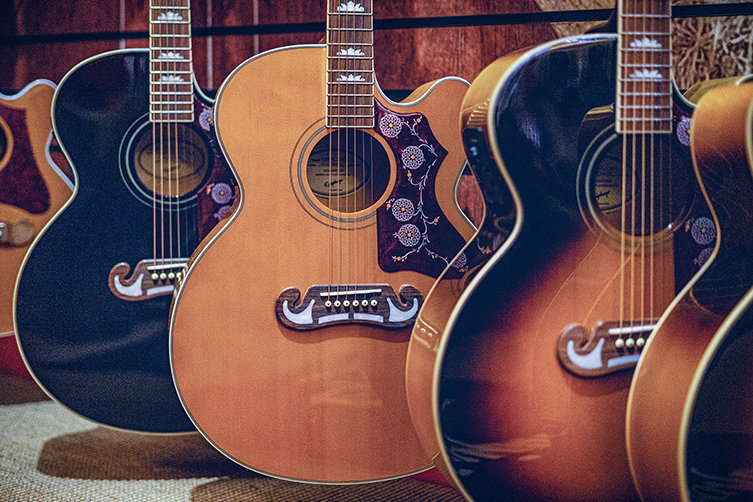
Epiphone EJ-200
Yes, this is the guitar you’ll have noticed on Noel's lap on the Definitely Maybe cover. That record probably sold more Epiphone acoustics than anything else in the brand’s existence! At the time, Gallagher wasn’t in a position to afford a USA-made Gibson SJ-200 model, but still wanted that large bodied tone and beauty. The Epiphone EJ-200 did the job well - it certainly looks and sounds the part - and continues to be one of the most popular acoustic guitars on the market.
The lineage of the J-200 (or SJ-200, to give the Gibson its proper name) is vast, with associations to Elvis, Bob Dylan and countless other classic musicians. Epiphone’s affordable take gives you that inimitable style and swagger at an unbeatable price. Also, for once, it's cool to say that our artist today used the cheaper model, rather than the expensive one.
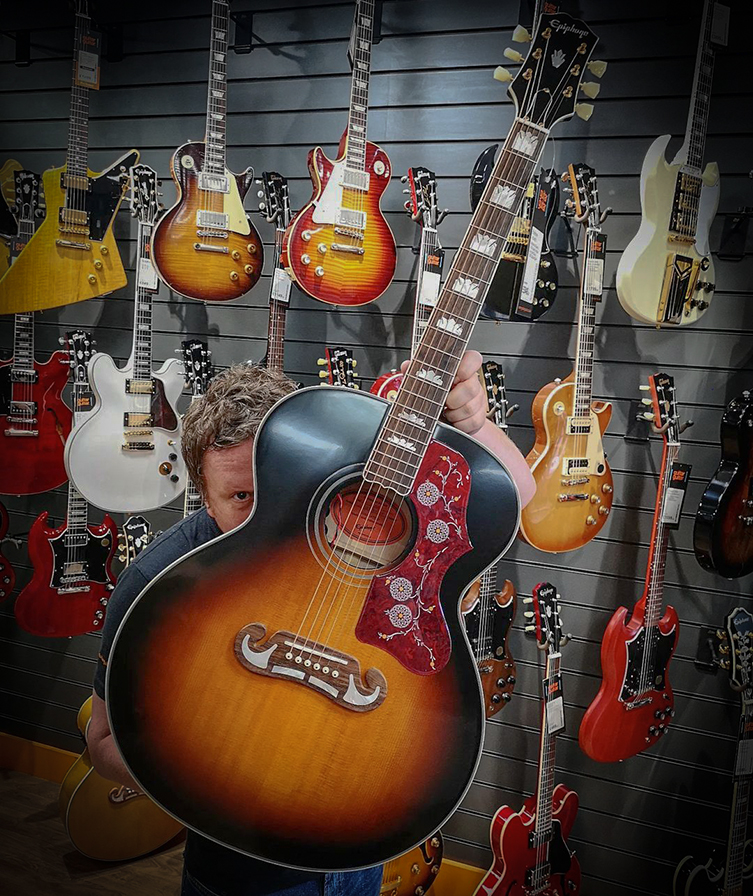
Takamine
You do actually see quite a lot of pictures of Gallagher strumming Takamine acoustics back in the day. Mostly they are cutaway dreadnought models, and since Takamine tend to update their models, you may not find the exact models used by Noel back in the day (such as the EF-325SRC and the FP-460SC) but you’ll find equivalent models that cover very similar ground.

Here’s a fun fact for you: one of Noel’s Takamines was the ‘Wonderwall’ guitar! Yes, the aforementioned FP-460SC is the one credited with the actual recorded performance, even though Gallagher tended to be pictured with an Epi J-200 more often.
Martin D-28
For those who can afford it, the Martin D-28 is a right of passage. A songwriter’s classic and a guitar we’ve seen in the hands of everyone from Joni Mitchell to Neil Young. Gallagher has been spotted with one for years now, and whilst he is seen sporting a number of classic acoustics (Gibsons maybe more than others), the D28 seems to be a favourite.
Noel Gallagher Guitar Playing Tips
Noel is a songwriter’s guitarist rather than a typical lead player. That’s not to say that he can knock out a tasty lick here and there, but it never seems to be the main focus of his craft. If you want to cop a little of his style and attitude, here are some things to try…
Layer Your Sounds
Density is a thing with the Oasis sound. There are generally two people playing (Bonehead back in the day, Gem Archer these days), often playing the same parts in the same places. This builds that real wall of sound, and provides a dense bed for Liam's vocals to sit on top of. Noel once famously quipped that if Bonehead took his hands away from playing barre chords, he'd be fired, and whilst I think he was being facetious, it's still an interesting insight into the eraly process, at least!
If you have only one guitarist in your band, consider the use of ambient delays to add the required density.
Direct and Simple
Noel doesn’t shred but he definitely takes lead solos often. His key is to make his leads accessible and melodic: think about songs like D’Yer Know What I Mean or Live Forever. Each of these solos is succinct and to the point, but still dramatic and appropriate for the song. Think of how easy it is to hum the solo, and if it’s too difficult, then you’re overplaying!
Less Muting
In terms of rhythm playing, Noel definitely isn’t a typical rock guy. He doesn’t do much in the way of palm muting at all, preferring instead to let the chords ring out fully. It’s part of the wall of sound approach that he favours, and it also keeps his heavily distorted sound from becoming too ‘metal’, which isn’t something he seems to want!
Don’t be Too Complex with Chords, but Use 7ths
Like most successful songwriters, Noel Gallagher doesn’t tend to add too many overly complex or extended chords to his musical vocabulary. Open chords, the use of a capo and drone notes will all help you to get that trademark chordal shimmer.
One thing I do suggest you check out if you aren’t too familiar with them are 7th chords. Major and minor 7th chords can really add a sense of space and direction to a chord progression, leading the listener's ear in a way that we are all - post-Beatles - familiar with. To some degree, we expect it, and so it’s good to have them under our belts as songwriters, for added dimension and authenticity.
Add a Surprise
The chorus time signature change in All Around the World. The sudden rhythmic change for the ‘It’s just Rock n roll’ section of Rock n Roll Star…there are countless little tricks that are thrown in by Noel to shake up a song and bring it somewhere less expected.
It’s a very addictive thing to do and he’s good at making it seem casual.
Just Turn it Up and Play
To be honest, the best thing you can do is just play loud and enjoy it. Don’t overthink it. As much as he is a Johnny Marr fan, Noel is from the Steve Jones school of guitar playing: loud, brash, in-your-face, fun and popular. It doesn’t pay to be too fancy, and there’s a lot of freedom to be felt in keeping it simple and just blasting out your message.
Also, I love how accessible the gear is. I’m not writing about top-end megapriced guitars or amps, it’s (mostly) affordable stuff, employed by a great songwriter to deliver the goods. At the end of the day, isn’t that what really matters?
Click to Browse our Selection of Noel Gallagher Equipment



